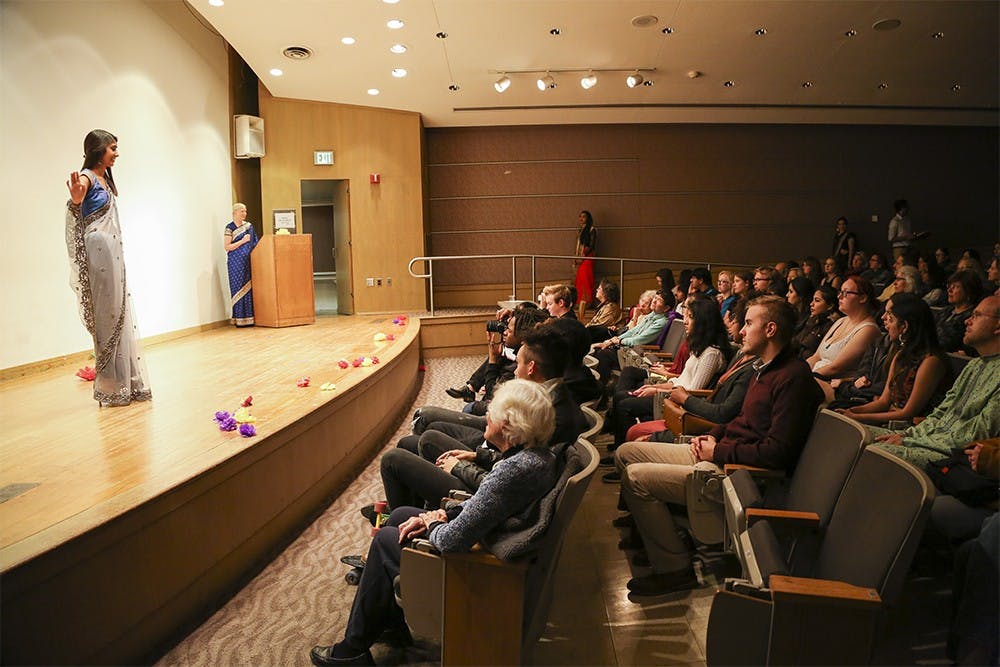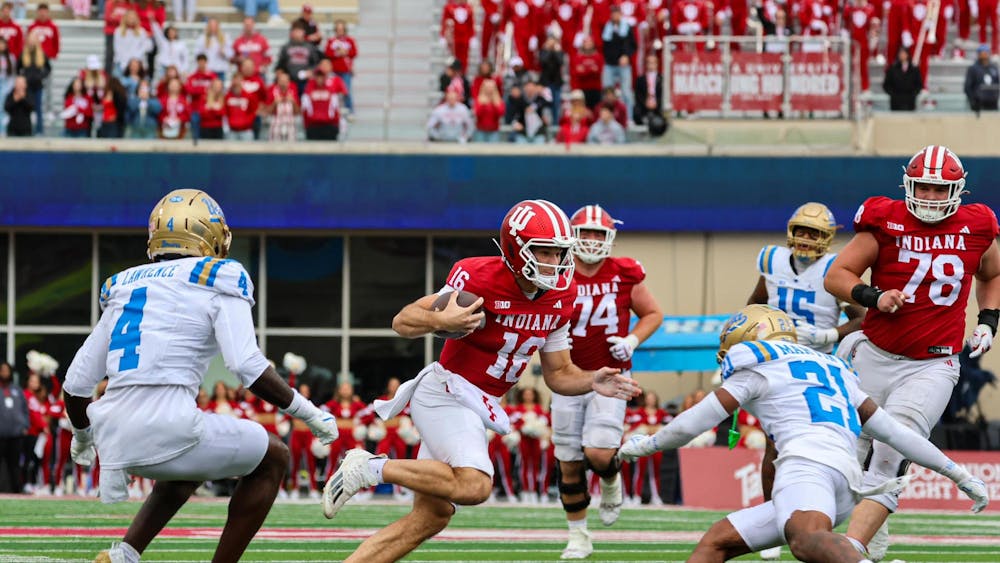The fashion show, “Draped in Light: the Enduring Art of the Indian Sari” was put on by the Indian Student Association in conjunction with Special Exhibition on display in the IU Art Museum, “The Indian Sari: Next to the Skin, Close to the Heart.”
“The exhibition is showcasing saris from different parts of India, and in the fashion show, they are showcasing different ways in which you can wear a sari, so it complements the gallery,” curator of the exhibit Judy Stubbs said.
The 19 models displayed 12 different ways of draping throughout the show, from the classic and most popular Nivi style to the mermaid and tied on the wrist style for hands-free movement.
Each sari had a different simple- or intricately-detailed pallu, or the end of the sari that can be draped over the head, across the shoulders or over an arm. There were saris made of cotton, silk or chiffon with brocade, sequins, beading, tie dye and many other embellishments.
“Every part of India boasts its own unique designs, patterns, weaves, borders and sari ends,” said professor Rebecca Manring, who emceed the event. “All of these signal a sari’s geographical origins.”
The saris on display in the art museum, all donated by Prema Popkin, display aspects of styles from all over India. There are South Indian saris made from thick silk and wild silk saris made using silk from silk worms only found in northeastern India, along with many others stretched to their full length on the gallery walls or draped on mannequins.
Popkin also loaned six of her saris to the Indian Student Association for the models to wear during the show, but the 13 other saris are owned by the students. As each model took the stage, Manring described the style of draping, the meaning of the decorations and where each sari was made.
“I think there are two different kinds of fashion shows,” said Roshni Dhoot, co-president of the Indian Student Association. “There’s an educational kind and a kind that’s hyped up and you go just to have fun. This show was more educational, where people came from different cultures to learn about Indian culture. We did a lot of research and learned about the different styles of saris. It was a learning experience for all people involved.”
Manring said it is important to learn about the importance of the sari in Indian culture, because the more we know about each other around the world, the better.
She said there are more than 70 ways to wear a sari, but however it is draped, it has always been associated with grace.
“The sari traces back to the Indus valley civilization, which flourished from 2800 to 1800 B.C. in the northwestern part of the Indian subcontinent,” Manring said. “Now, thousands of years later, the enduring art of the Indian sari continues to
captivate us.”
Editor’s note: The IDS’ galleries beat reporter was a part of the fashion show.






